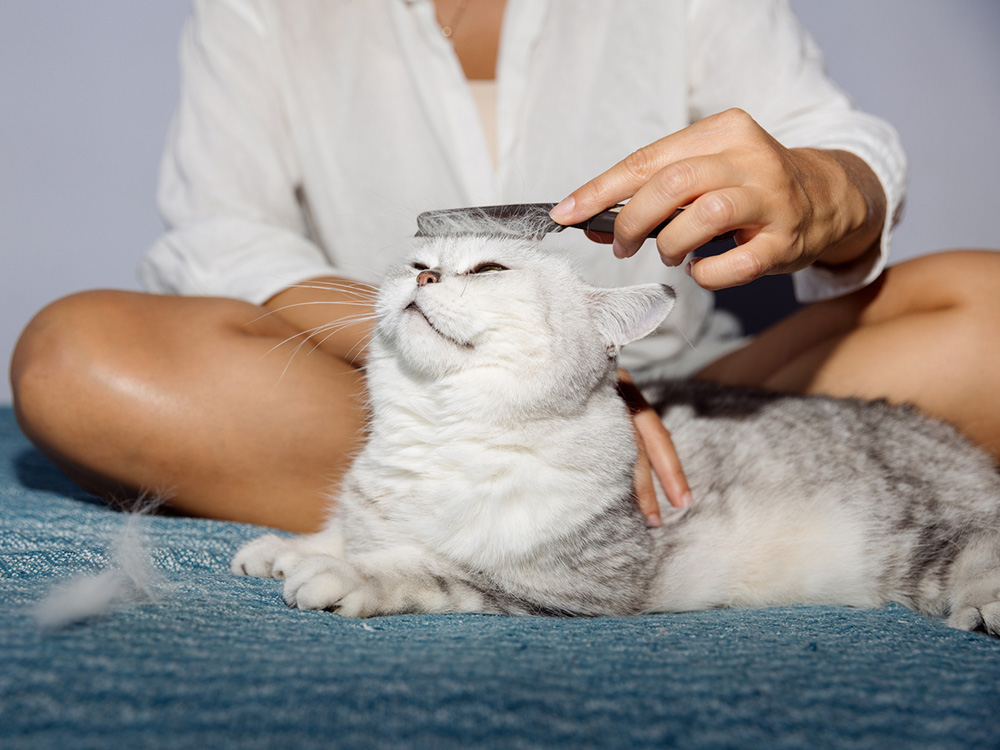Removing Fleas from Your Cat: A Comprehensive Guide

Flea infestations can be a serious problem for cats, leading to discomfort, skin irritation, and potential health issues. Taking proactive measures to remove fleas and prevent future infestations is crucial for your feline friend’s well-being. Here’s a step-by-step guide to help you effectively tackle fleas on your cat.
Understanding Fleas
Fleas are small, blood-sucking insects that can cause significant discomfort for cats. They can also transmit diseases and lead to more severe health issues if not addressed promptly.
Signs of a Flea Infestation
- Excessive Grooming: If your cat is grooming themselves more than usual, especially in certain areas, they may be trying to relieve itching caused by fleas.
- Flea Dirt: Look for tiny black specks in your cat’s fur, known as flea dirt. You can check for this by rubbing your cat’s fur with a damp cloth; if it turns red, it’s likely flea feces.
- Skin Irritation: Fleas can cause allergic reactions, leading to red, irritated skin or hair loss.
Steps to Remove Fleas from Your Cat
- Bathe Your Cat:
- While not all cats enjoy baths, bathing your cat can help eliminate fleas. Use a cat-safe flea shampoo, following the instructions carefully. Ensure you rinse thoroughly to remove all shampoo and fleas.
- If your cat is not accustomed to baths, consider using a damp cloth to wipe them down instead.
- Use a Flea Comb:
- After bathing, use a fine-toothed flea comb to remove any remaining fleas and their eggs. Focus on areas where fleas tend to hide, such as around the ears, under the chin, and at the base of the tail.
- Dip the comb in soapy water to trap and kill the fleas you remove.
- Apply Flea Treatments:
- Choose a veterinarian-recommended flea treatment, which can include topical treatments, oral medications, or flea collars. These products can help eliminate fleas and prevent future infestations.
- Always read and follow the product instructions carefully to ensure safe and effective application.
- Wash Bedding and Toys:
- Wash your cat’s bedding, blankets, and any toys in hot water to kill fleas and their eggs. Dry them on high heat to ensure complete extermination of any pests.
- Treat Your Home:
- Vacuum your home thoroughly, focusing on carpets, rugs, and upholstered furniture where your cat may spend time. Dispose of the vacuum bag or empty the canister outside to prevent fleas from re-entering your home.
- Consider using flea sprays or powders designed for home use, especially in areas where your cat frequents.
Preventing Future Flea Infestations
- Regular Flea Prevention:
- Establish a regular flea prevention routine throughout the year. Discuss with your veterinarian to determine the best preventative measures for your cat, which may include topical treatments, oral medications, or flea collars.
- Maintain a Clean Environment:
- Keep your home clean by vacuuming frequently and washing your cat’s bedding regularly. A clean environment can significantly reduce the likelihood of flea infestations.
- Outdoor Control:
- If your cat goes outdoors, keep your yard tidy. Mow the lawn and remove debris where fleas can thrive. Consider using outdoor flea control products as needed.
- Regular Vet Visits:
- Schedule regular veterinary check-ups to monitor your cat’s health and ensure they remain flea-free. Your vet can recommend effective flea prevention products based on your cat’s specific needs.
Conclusion
Removing fleas from your cat is essential for their health and comfort. By bathing your cat, using a flea comb, applying appropriate treatments, and maintaining a clean environment, you can effectively eliminate fleas and prevent future infestations. Regular preventive care and veterinary guidance are key to ensuring your cat remains happy and healthy. Taking prompt action when you notice signs of fleas will lead to a flea-free, comfortable environment for both you and your feline friend!



